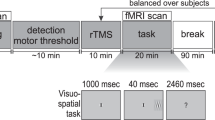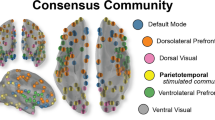Abstract
Spatial attention is a prime example for the distributed network functions of the brain. Lesion studies in animal models have been used to investigate intact attentional mechanisms as well as perspectives for rehabilitation in the injured brain. Here, we systematically analyzed behavioral data from cooling deactivation and permanent lesion experiments in the cat, where unilateral deactivation of the posterior parietal cortex (in the vicinity of the posterior middle suprasylvian cortex, pMS) or the superior colliculus (SC) cause a severe neglect in the contralateral hemifield. Counterintuitively, additional deactivation of structures in the opposite hemisphere reverses the deficit. Using such lesion data, we employed a game-theoretical approach, multi-perturbation Shapley value analysis (MSA), for inferring functional contributions and network interactions of bilateral pMS and SC from behavioral performance in visual attention studies. The approach provides an objective theoretical strategy for lesion inferences and allows a unique quantitative characterization of regional functional contributions and interactions on the basis of multi-perturbations. The quantitative analysis demonstrated that right posterior parietal cortex and superior colliculus made the strongest positive contributions to left-field orienting, while left brain regions had negative contributions, implying that their perturbation may reverse the effects of contralateral lesions or improve normal function. An analysis of functional modulations and interactions among the regions revealed redundant interactions (implying functional overlap) between regions within each hemisphere, and synergistic interactions between bilateral regions. To assess the reliability of the MSA method in the face of variable and incomplete input data, we performed a sensitivity analysis, investigating how much the contribution values of the four regions depended on the performance of specific configurations and on the prediction of unknown performances. The results suggest that the MSA approach is sensitive to categorical, but insensitive to gradual changes in the input data. Finally, we created a basic network model that was based on the known anatomical interactions among cortical–tectal regions and reproduced the experimentally observed behavior in visual orienting. We discuss the structural organization of the network model relative to the causal modulations identified by MSA, to aid a mechanistic understanding of the attention network of the brain.










Similar content being viewed by others
References
Abraham M, Kötter R, Krumnack A, Wanke E (2006) A connectivity rating for vertices in networks. In 4th IFIP International Conference on Theoretical Computer Science, pp 283–298
Bowes JR, Stroman P, Garcia A (2011) Neural correlates of focused attention in cognitively normal older adults. World J Neurosci 1:19–27
Chang C-C, Lin C-J (2011) LIBSVM: a library for support vector machines. ACM Trans Intell Syst Technol 2:27:1–27:27
Chica AB, Botta F, Lupiáñez J, Bartolomeo P (2012) Spatial attention and conscious perception: interactions and dissociations between and within endogenous and exogenous processes. Neuropsychologia 50(5):621–629. doi:10.1016/j.neuropsychologia.2011.12.020
Corbetta M, Kincade MJ, Lewis C, Snyder AZ, Sapir A (2005) Neural basis and recovery of spatial attention deficits in spatial neglect. Nat Neurosci 8(11):1603–1610
Corbetta M, Shulman GL (2002) Control of goal-directed and stimulus-driven attention in the brain. Nat Rev Neurosci 3(3):201–215
Corbetta M, Shulman GL (2011) Spatial neglect and attention networks. Annu Rev Neurosci 34:569–599
Grefkes C, Fink GR (2011) Reorganization of cerebral networks after stroke: new insights from neuroimaging with connectivity approaches. Brain 134(Pt 5):1264–1276
Grefkes C, Nowak Da, Wang LE, Dafotakis M, Eickhoff SB, Fink GR (2010) Modulating cortical connectivity in stroke patients by rTMS assessed with fMRI and dynamic causal modeling. NeuroImage 50(1):233–242
He BJ, Snyder AZ, Vincent JL, Epstein A, Shulman GL, Corbetta M (2007) Breakdown of functional connectivity in frontoparietal networks underlies behavioral deficits in spatial neglect. Neuron 53(6):905–918
Heilman KM, Valenstein E, Watson RT (2000) Neglect and related disorders. Sem Neurol 20(4):463–470
Hilgetag CC, Kötter R, Young MP (1999) Inter-hemispheric competition of sub-cortical structures is a crucial mechanism in paradoxical lesion effects and spatial neglect. Prog Brain Res 121:121–141
Hilgetag CC, Théoret H, Pascual-Leone A (2001) Enhanced visual spatial attention ipsilateral to rTMS-induced ’virtual lesions’ of human parietal cortex. Nat Neurosci 4(9):953–957
Horel JA, Pytko-Joiner DE, Voytko ML, Salsbury K (1987) The performance of visual tasks while segments of the inferotemporal cortex are suppressed by cold. Behav Brain Res 23(1):29–42
Kapur N (1996) Paradoxical functional facilitation in brain-behaviour research. A critical review. Brain 119(Pt 5):1775–1790
Kastner S, Ungerleider LG (2000) Mechanisms of visual attention in the human cortex. Annu Rev Neurosci 23:315–341
Kaufman A, Keinan A, Meilijson I, Kupiec M, Ruppin E (2005) Quantitative analysis of genetic and neuronal multi-perturbation experiments. PLoS Comput Biol 1(6):e64
Kaufman A, Kupiec M, Ruppin E (2004) Multi-knockout genetic network analysis: the Rad6 example. In: Proceedings of the 2004 IEEE Computational Systems Bioinformatics Conference (CSB), pp 332–340
Keinan A, Kaufman A, Sachs N, Hilgetag CC, Ruppin E (2004a) Fair localization of function via multi-lesion analysis. Neuroinformatics 2(2):163–168
Keinan A, Sandbank B, Hilgetag CC, Meilijson I, Ruppin E (2004b) Fair attribution of functional contribution in artificial and biological networks. Neural Comput 16(9):1887–1915
Keinan A, Sandbank B, Hilgetag CC, Meilijson I, Ruppin E (2006) Axiomatic scalable neurocontroller analysis via the Shapley value. Artif Life 12(3):333–352
Koch G, Bonnì S, Giacobbe V, Bucchi G, Basile B, Lupo F, Versace V, Bozzali M, Caltagirone C (2012) Theta-burst stimulation of the left hemisphere accelerates recovery of hemispatial neglect. Neurology 78(1):24–30
Koch G, Oliveri M, Cheeran B, Ruge D, Lo Gerfo E, Salerno S, Torriero S, Marconi B, Mori F, Driver J, Rothwell JC, Caltagirone C (2008) Hyperexcitability of parietal–motor functional connections in the intact left-hemisphere of patients with neglect. Brain 131(Pt 12):3147–3155
Lomber SG (1999) The advantages and limitations of permanent or reversible deactivation techniques in the assessment of neural function. J Neurosci Methods 86(2):109–117
Lomber SG, Payne BR (1996) Removal of two halves restores the whole: reversal of visual hemineglect during bilateral cortical or collicular inactivation in the cat. Visual Neurosci 13:1143–1156
Lomber SG, Payne BR, Cornwell P (2001) Role of the superior colliculus in analyses of space: superficial and intermediate layer contributions to visual orienting, auditory orienting, and visuospatial discriminations during unilateral and bilateral deactivations. J Comp Neurol 441(1):44–57
Lomber SG, Payne BR, Hilgetag CC, Rushmore J (2002) Restoration of visual orienting into a cortically blind hemifield by reversible deactivation of posterior parietal cortex or the superior colliculus. Exp Brain Res 142(4):463–474
Lomber SG, Payne BR, Horel JA (1999) The cryoloop: an adaptable reversible cooling deactivation method for behavioral or electrophysiological assessment of neural function. J Neurosci Methods 86(2):179–194
Meikle TH, Sprague JM (1964) The neural organization of the visual pathways in the cat. Int Rev Neurobiol 6:149–189
Mesulam MM (1999) Spatial attention and neglect: parietal, frontal and cingulate contributions to the mental representation and attentional targeting of salient extrapersonal events. Philos Trans Royal Soc London B Biol Sci 354(1387):1325–1346
Olivier E, Corvisier J, Pauluis Q, Hardy O (2000) Evidence for glutamatergic tectotectal neurons in the cat superior colliculus: a comparison with GABAergic tectotectal neurons. Eur J Neurosci 12(7):2354–2366
Payne BR, Lomber SG, Geeraertst S, van der Gucht E, Vandenbussche E (1996a) Reversible visual hemineglect. Proc Natl Acad Sci USA 93(1):290–294
Payne BR, Lomber SG, Villa AE, Bullier J (1996b) Reversible deactivation of cerebral network components. Trends Neurosci 19(12):535–542
Payne BR, Rushmore RJ (2003) Animal models of cerebral neglect and its cancellation. Neuroscientist 9(6):446–454
Rorden C, Karnath HO (2004) Using human brain lesions to infer function: a relic from a past era in the fMRI age? Nat Rev Neurosci 5(10):813–819
Rushmore RJ, Valero-Cabre A, Lomber SG, Hilgetag CC, Payne BR (2006) Functional circuitry underlying visual neglect. Brain 129(Pt 7):1803–1821
Shapley LS (1953) Stochastic Games. Proc Natl Acad Sci USA 39(10):1095–1100
Sprague JM (1966) Interaction of cortex and superior colliculus in mediation of visually guided behavior in the cat. Science 153(3743):1544–1547
Sprague JM, Meikle TH (1965) The role of the superior colliculus in visually guided behavior. Exp Neurol 11:115–146
Thiebaut de Schotten M, Urbanski M, Duffau H, Volle E, Lévy R, Dubois B, Bartolomeo P (2005). Direct evidence for a parietal–frontal pathway subserving spatial awareness in humans. Science 309(5744):2226–2228
Vallar G, Perani D (1986) The anatomy of unilateral neglect after right-hemisphere stroke lesions. A clinical/CT-scan correlation study in man. Neuropsychologia 24(5):609–622
Vuilleumier P, Hester D, Assal G, Regli F (1996) Unilateral spatial neglect recovery after sequential strokes. Neurology 46(1):184–189
Wallace SF, Rosenquist AC, Sprague JM (1990) Ibotenic acid lesions of the lateral substantia nigra restore visual orientation behavior in the hemianopic cat. J Comp Neurol 296(2):222–252
Young MP, Hilgetag CC, Scannell JW (2000) On imputing function to structure from the behavioural effects of brain lesions. Philos Trans Royal Soc London B Biol Sci 355(1393):147–161
Acknowledgments
Research was supported by the ERA-NET NEURON project “BEYONDVIS”, BMBF 01EW1002, and the Collaborative Research Center “Multi-site Communication in the Brain” (DFG SFB 936/A1). We are very grateful to R. Jarrett Rushmore and Arnaud Messé for helpful comments on the manuscript.
Author information
Authors and Affiliations
Corresponding author
Rights and permissions
About this article
Cite this article
Zavaglia, M., Hilgetag, C.C. Causal functional contributions and interactions in the attention network of the brain: an objective multi-perturbation analysis. Brain Struct Funct 221, 2553–2568 (2016). https://doi.org/10.1007/s00429-015-1058-z
Received:
Accepted:
Published:
Issue Date:
DOI: https://doi.org/10.1007/s00429-015-1058-z




